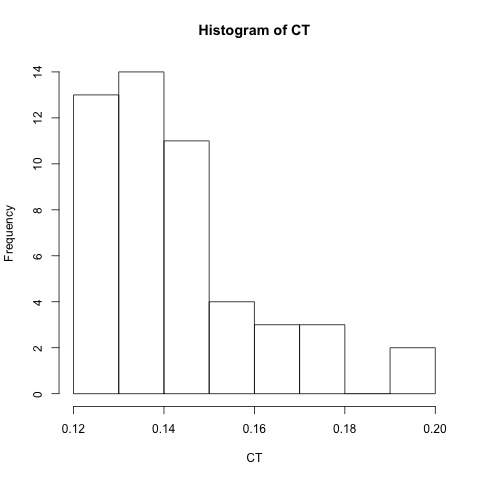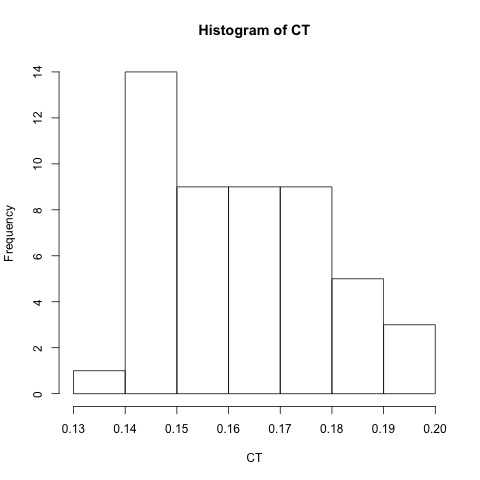Algorithmic part of your implementation is correct. Problems lie in
- The loop structure in
GD is not right; the for loop is redundant and variables lack proper initialization.
- Simple implementation of gradient descent by using a fixed
alpha is dangerous. It is usually suggested that this alpha should be chosen small enough to hope that we always search down the objective function. However, this is rare in practice. For example, how small is sufficient? If it is small, then convergence speed is a problem; but if it is large, we may be trapped in a 'zig-zag' searching path and even a divergence!
Here is a robust version of Gradient Descent, for estimation of linear regression. The improvement comes from the step halving strategy, to avoid "zig-zag" or divergence. See comments along the code. Under this strategy, it is safe to use large alpha. Convergence is guaranteed.
# theta: initial guess on regression coef
# alpha: initial step scaling factor
GD <- function(X, y, theta, alpha) {
cost_histo <- numeric(0)
theta_histo <- numeric(0)
# an arbitrary initial gradient, to pass the initial while() check
delta <- rep(1, ncol(X))
# MSE at initial theta
old.cost <- COST(theta, X, y)
# main iteration loop
while (max(abs(delta)) > 1e-7) {
# gradient
error <- X %*% theta - y
delta <- crossprod(X, error) / length(y)
# proposal step
trial.theta <- theta - alpha * c(delta)
trial.cost <- COST(trial.theta, X, y)
# step halving to avoid divergence
while (trial.cost >= old.cost) {
trial.theta <- (theta + trial.theta) / 2
trial.cost <- COST(trial.theta, X, y)
}
# accept proposal
cost_histo <- c(cost_histo, trial.cost)
theta_histo <- c(theta_histo, trial.theta)
# update old.cost and theta
old.cost <- trial.cost
theta <- trial.theta
}
list(cost_histo, theta_histo = matrix(theta_histo, nrow = ncol(X)))
}
On return,
- the length of
cost_histo tells you how many iterations have been taken (excluding step halving);
- each column of
theta_histo gives theta per iteration.
Step halving in fact speeds up convergence greatly. You can get more efficiency if you use a faster computation method for COST. (Most useful for large datasets. See https://mcmap.net/q/298305/-fastest-way-to-compute-row-wise-dot-products-between-two-skinny-tall-matrices-in-r)
COST<-function(theta,X, y) {
c(crossprod(X %*% theta - y)) /(2*length(y))
}
Now, let's consider its implementation on your example X, y.
oo <- GD(X, y, c(0,0), 5)
After 107 iterations it converges. We can view the trace of MSE:
plot(oo[[1]])
Note that at the first few steps, MSE decreases very fast, but then it is almost flat. This reveals the fundamental drawback of gradient descent algorithm: convergence gets slower and slower as we get nearer and nearer to the minimum.
Now, we extract the final estimated coefficient:
oo[[2]][, 107]
We can also compare this with direct estimation by QR factorization:
.lm.fit(X, y)$coef
They are pretty close.


